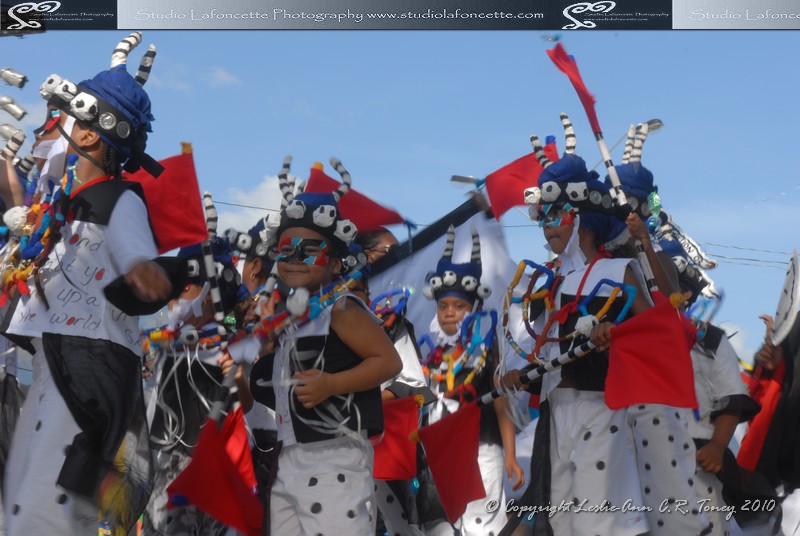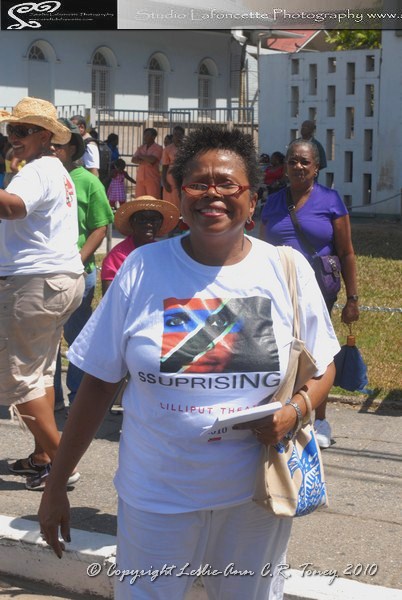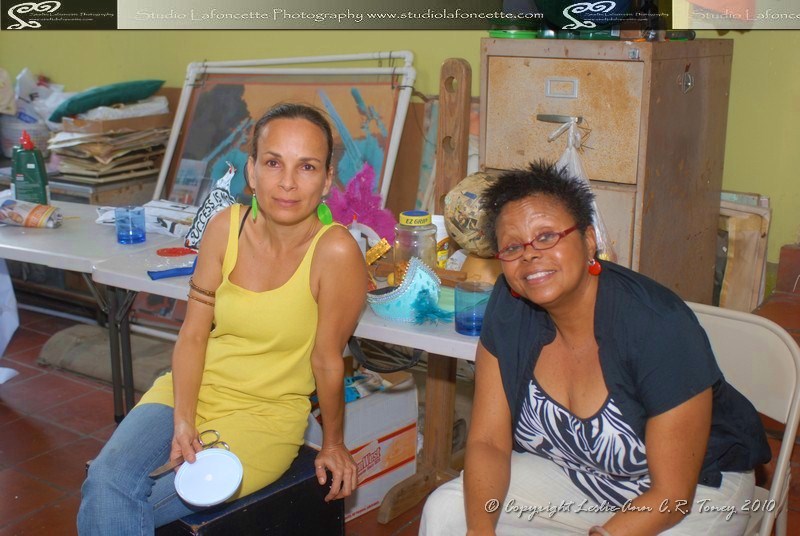Top photo, young masquerader from Lilliput’s Lagahoo in 2009, immediately above, masqueraders from their 2010 Uprising.
People wonder about the process. How does all of this happen. Trinidad carnival is similar to that of Brazil, but it’s not samba schools in the parades. Anyone can join in, from infants with costumes made around strollers and walkers, to octogenarian masqueraders in wheelchairs. I’ve seen it all.
The dedication of several behind the scenes people, is what makes carnival possible. Particularly in the area of children’s mas, women dominate the scene. They organize bands in their communities or through schools as teachers, often they design, teach themes to children, sew, glue, tack, nurture, prod families along the way to that big parade on Carnival Saturday. Thousands of individuals, many of them women, create mas bands so that the rest of us can walk into a mas camp, view a photo, modeled sample or drawing of a section, pay money to register, and collect a costume before the big day(s).
Here’s a look at one such notable mas woman, who’s behind-the-scenes contribution results in a socially conscious, attractive and affordable children’s band every year, and a stage production in May.
Noble Douglas of the Noble Douglas Dance Company Inc. and Lilliput Children’s Theatre
Noble Douglas organizing and corralling on Carnival Saturday 2009 at the NCC parade.
Noble Douglas is a reputable dancer and dance teacher in Trinidad & Tobago, who runs her own Lilliput Children’s Theatre. Each year in May the theatre puts on a stage production that follows the theme of their carnival presentation. Ms. Douglass has won numerous awards and prizes for her work in dance, and in Children’s Carnival. However, she irreverently says that she gives them away to the children – the true reward for her years of work. With the help of her long-term designer Merylle Mahabir, the team produces children’s bands that speak (loudly) to social and political issues in a manner that is child-appropriate, novel, and humerous. For example, their 2009 production, Lagahoo, used the Trinidadian mythology of lagahoo to find a way to communicate with children about the dangers of nice looking strangers – as a response to the unfortunate but growing trend of crimes against children. They had another band called Smelly, in response to public outcry about the construction of an aluminium smelter plant in Trinidad, one about the barge of toxic waste that the government allowed to travel through national waters without concern or alerting the public, and yet another about the dangers of fast food and increase in transnational fast food chains. Deep stuff for children huh. Somehow they seem to do it in a way that conveys an appropriate message to children.
Merylle Mahabir has designed mas for Lilliput for over 20 years. She is also an interior designer and part owner of a successful design business. I interviewed “Aunty Noble”, as she is called by many and Merylle last year. To hear their story in 4 parts click here.
Merylle Mahabir and Noble Douglas



